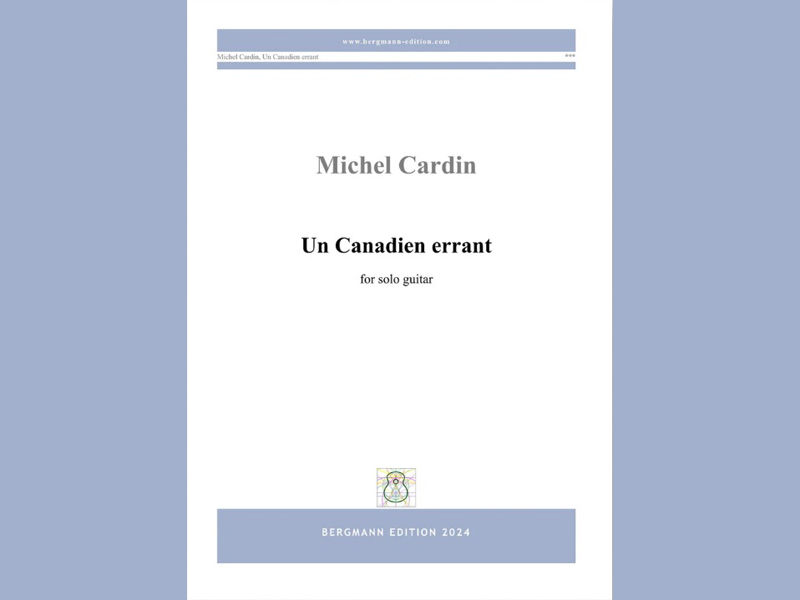Gaetano Troccoli : Bon Voyage (Collezione di facili brani):Bergmann
- chrisdumigan
- Nov 10, 2021
- 3 min read
Updated: Jun 4, 2022

Gaetano Troccoli
Bergmann Edition : 16 pages
Italian – born Troccoli is a composer, teacher, performer of the guitar, although writes for many other ensembles. This latest book as the introduction states ‘offers guitar beginners material that helps deepen various aspects of performing. Each piece of music focuses on a specific technical detail, which is presented directly, i.e. so that the performer is not distracted by other elements that could prevent or make it difficult for him to acquire this technical goal. This particular focus at the base of the compositions is, however, accompanied by the author's preoccupation to present interesting music pieces.’
So we find here 13 unnamed pieces that a modest player could happily get to grips with. The first piece is largely semi – quaver driven , often in two voices with a longer note accompanied by semi – quaver arpeggios.No2 has two voices again throughout with the melody carried by one part and the other providing an accompanying single note (and in one or two instances an actual chord) No3 swaps that around with the melody now in the higher part with the bass alternating as a harmony .No4 is slightly more adventurous with a long note accompanied by a quaver driven second voice , with some slight dissonances along the way .Gradually the pieces get a little more difficult with No5 , still in 2 voices, but more movement in the quavers part, and more use of accidentals along the way, and No6 relying heavily on harp – like effects with the aid of careful string usage. No7 might be useful for the player to learn how to play a melody in between strumming a chord, but with the chord in this instance being entirely made up of the open strings ( not counting the top melody) its 31 bars got a little tedious.No8 is a swing item, with the instruction at the top to make straight quavers , as written below into a triplet of quavers with the first note occupying 2 of the three quavers.No9 has a low voiced melody accompanied by deliberately marked staccato chords for the greater majority of the piece thus teaching the player that chords don’t always have to ring on, even when most of the notes in the chord are often open strings. No10 is similar to No7, in that the melody at the top is accompanied throughout by an open string chord except on 4 occasions, and here the melody reaches a lot higher up the fingerboard too.No11 is a gentle waltz that does not rely on chords, but two moving voices throughout. The penultimate piece is again in swing rhythm but more complex in that it has a number of unusual accidentals that could catch the player out, and as a whole the piece is more modern in flavour, and so usually nothing is where you expect it to be, finger – wise. The final No13 is again a little more modern in its harmonies and has some unexpected moments as a result.
As a set this is pleasant and friendly in its melodies and harmonies, and whereas its not the greatest set of beginner pieces I have come across, it is certainly a useful one, and one which I can see would offer the pupil who was looking for some technical instruction , whilst playing something worthwhile, some pleasant pieces to try out.
Chris Dumigan




Comments